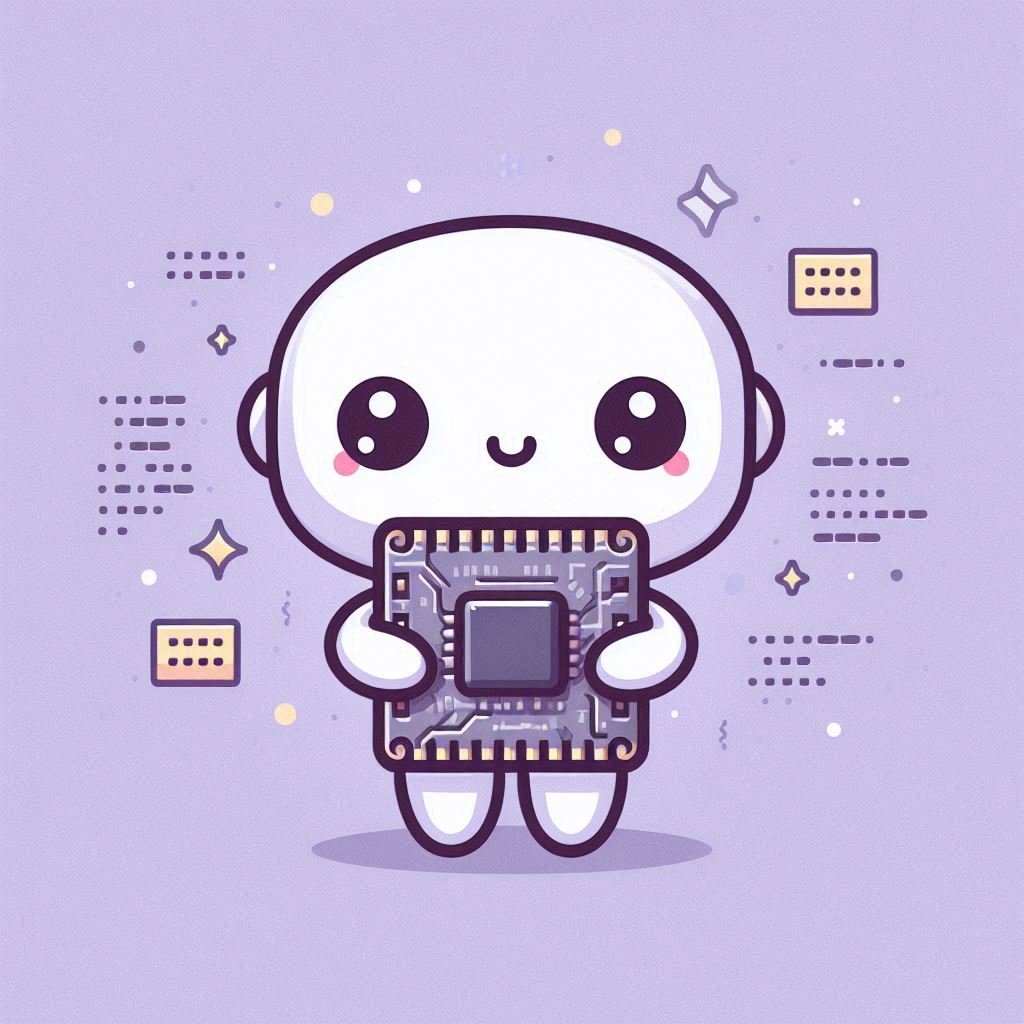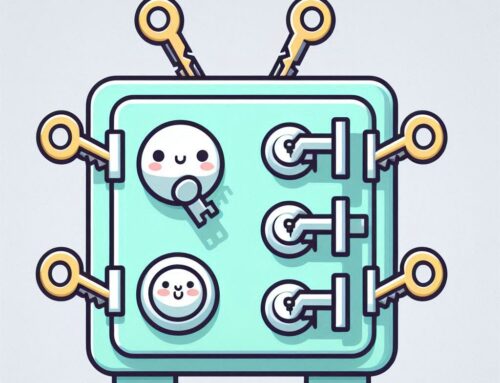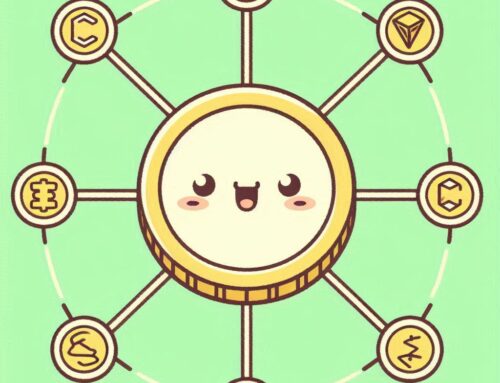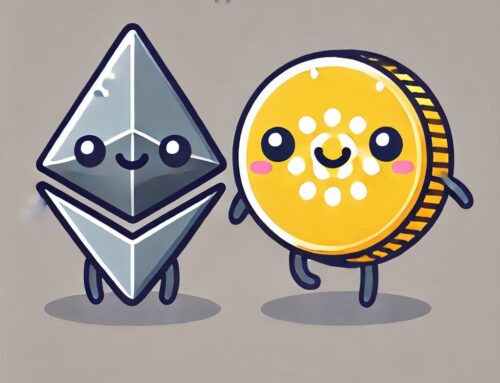From Code Dreams to Smart Contract Reality: A Humorous Look Back at Cardano’s Game-Changing Goguen Era!
Alright, everyone, grab your thinking caps and prepare for a journey back in time to a pivotal period in Cardano’s history: the Goguen era! No, it’s not about some long-lost civilization or a mythical land of coding wizards; it’s about the arrival of smart contracts and the Plutus platform, which fundamentally transformed Cardano from a secure and decentralized blockchain into a versatile platform for building all sorts of decentralized applications (dApps).
The Goguen era marked a huge upgrade in terms of what was possible on the Cardano network. Think of it like giving a superhero a shiny new tool belt, filled with gadgets and gizmos that allow them to tackle even the trickiest situations, or even to shoot webs and fly. So, let’s dive into the magical realm of the Goguen era, explore all the fantastic additions it brought to Cardano, and understand how it paved the way for a new age of blockchain innovation!
The Pre-Goguen Era: A Blockchain with Potential (But Lacking the Smartest Tool!)
Before the grand arrival of the Goguen era, Cardano was primarily focused on establishing a strong and secure foundation. While it boasted impressive credentials in terms of decentralization, security, and scalability, it lacked the critical ability to run complex, self-executing agreements. This meant that the blockchain was primarily used for simple transactions, but not much else.
-
Focus on Infrastructure (Building the Foundation First!): The primary focus in this era was on building a reliable, secure, and scalable blockchain, with the intention of adding smart contract functionality at a later date, in line with the long term project roadmap.
-
Limited Functionality (Just the Basics, Please!): While transactions could be executed, there was no native capability to execute complex conditional agreements, which greatly limited the things that could be built on Cardano. It’s like having a car that can drive, but doesn’t have all the fancy features like GPS, Bluetooth, or even a functioning radio.
-
Anticipation Builds (Waiting for the Smart Stuff!): The Cardano community was eagerly awaiting the next level of functionality, which would be introduced during the Goguen era, and would finally unlock the true potential of the Cardano blockchain.
The Goguen Era: When Smart Contracts Took Center Stage (It’s Alive!)
The Goguen era was truly transformative, because it marked the arrival of smart contracts on Cardano, and gave power to developers to create a whole new class of decentralized applications. This allowed for complex logic to be encoded directly onto the blockchain. This was a huge change, and for many people, it was what allowed Cardano to truly compete with other layer 1 blockchains.
-
Smart Contracts Unleashed: The introduction of smart contracts enabled users to interact with the blockchain in a much more versatile way than just simply sending ADA from one wallet to another, expanding the functionality of the system. It’s like unlocking the full potential of a smartphone, enabling you to download new apps that add all sorts of new capabilities.
-
Decentralized Applications (dApps) Emerge (A New Wave of Innovation!): With smart contracts, developers could begin building a wide range of decentralized applications, from decentralized finance (DeFi) platforms to supply chain management systems, and other innovative tools.
-
A New Era of Possibilities (The Future is Here!): This Goguen era marked the beginning of a new era of innovation for Cardano, opening up new opportunities for developers and users alike. It’s like opening a door to a whole new world.
Smart Contracts 101: The Building Blocks of the Decentralized Future (Code That Executes Itself!)
So what exactly are smart contracts, and why are they so revolutionary to the Cardano ecosystem? A smart contract is a self-executing agreement written in code, that automatically enforces all the terms and conditions when specific criteria are met, without the need for a central authority, or other trusted third party. Smart contracts give developers the tools they need to build all kinds of decentralized applications on Cardano.
-
Automated Agreements (Cutting Out the Middleman!): Think of smart contracts like automated agreements that automatically enforce all the rules and conditions, without needing a middleman, or a lawyer to interpret the language. They are designed to automatically execute when certain conditions are met, which reduces the need for manual intervention.
-
Trustless Transactions (No Need to Trust Anyone!): Smart contracts enable trustless transactions, where you don’t need to rely on a central authority or third party to ensure that the agreement is followed, which is a huge benefit for those looking to transact in a secure and predictable manner.
-
Transparency and Security (Everything is Open and Verifiable!): All the details and code behind the smart contracts are transparent and verifiable on the blockchain, which means that anyone can audit and inspect the code that was used to execute these agreements, making it extremely difficult to tamper with or manipulate them.
Plutus: Powering Smart Contracts on Cardano (The Secret Sauce!)
The Goguen era introduced Plutus, Cardano’s powerful smart contract platform, providing the tools and languages necessary to build secure and reliable smart contracts. Plutus is a key component of the Cardano network, and gives developers all the functionalities they need.
-
Plutus Core (The Engine!): Plutus is based on a functional programming language, that allows for complex logic to be encoded into a smart contract, making it a highly versatile platform that is also provably secure.
-
Plutus Application Framework (PAF): Plutus includes a framework that simplifies the process of building and deploying smart contracts, providing pre-built components that help to expedite the development of new applications. It’s like having a toolkit of pre-built components that allow you to quickly build a complex application, without needing to reinvent the wheel every time.
-
Marlowe (Financial Instruments Made Easy!): The Goguen era also introduced Marlowe, a domain-specific language for financial smart contracts. This enables users to create complex financial contracts, without needing to be an expert coder. This also reduces the potential for unintended bugs, because it’s a domain-specific language.
-
Formal Verification (Security by Math!): The smart contracts on Plutus are designed to be rigorously tested using formal verification, which allows them to be mathematically proven to be secure. It’s like having a mathematical guarantee that your code is free from bugs, and will run as it was intended.
New Possibilities Opened Up by the Goguen Era (The Sky’s the Limit!)
With the dawning of the Goguen era, a plethora of new functionalities were introduced to the Cardano network, many of which were never before possible. These functionalities made Cardano more valuable for users, more useful for developers, and overall made it a better system.
-
Decentralized Finance (DeFi) Takes Off (A New Era of Finance!): DeFi applications, such as decentralized exchanges, lending platforms, and stablecoins, became possible through smart contracts, which allows users to access new kinds of financial instruments, without relying on centralized institutions.
-
Supply Chain Management (Tracking Everything!): Smart contracts can be used to track products as they move through supply chains, ensuring transparency and preventing fraud, making the entire process much more reliable and trustworthy.
-
Digital Identity (Controlling Your Data!): Smart contracts can be used to create secure and reliable digital identity solutions, giving users more control over their own data.
-
Voting Systems (Democracy on the Blockchain!): Smart contracts can be used to implement transparent and verifiable online voting systems, that improve the accessibility and reliability of elections and votes.
-
Custom Tokens (Build Your Own Digital World!): Native token support was also introduced in this era, which allows users to create custom tokens that can be transferred and traded on the Cardano network, making it easier to build all kinds of interesting and innovative projects.
The Takeaway: The Goguen Era Transformed Cardano into a Smart Contract Powerhouse
The Goguen era was a major turning point for Cardano, by bringing smart contracts, and the Plutus platform, to the network, and enabling developers to build all sorts of innovative decentralized applications. This era transformed Cardano from a blockchain focused primarily on security and decentralization to a versatile platform capable of supporting a wide range of use cases, and cementing Cardano as one of the major competitors in the space. It’s not just about building a digital coin; it’s about building a whole new world of possibilities on the blockchain.





